Hanger's Component - Hanger's Surface
Baking Enamel
 An enamel paint is a paint that air dries to a hard, usually glossy, finish. In reality, most commercially-available enamel paints are significantly softer than either vitreous enamel or stoved synthetic resins. An enamel paint is a paint that air dries to a hard, usually glossy, finish. In reality, most commercially-available enamel paints are significantly softer than either vitreous enamel or stoved synthetic resins.
Some enamel paints have been made by adding varnish to oil-based paint.
Typically the term "enamel paint" is used to describe oil-based covering products, usually with a significant amount of gloss in them, however recently many latex or water-based paints have adopted the term as well. The term today means "hard surfaced paint" and usually is in reference to paint brands of higher quality, floor coatings of a high gloss finish, or spray paints.
Fabric Cover
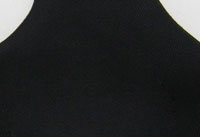 Fabric can be made from many materials. These materials come from four main sources: animal (wool, silk), plant (cotton, flax, jute), mineral (asbestos, glass fiber), and synthetic (nylon, polyester, acrylic). In the past, all textiles were made from natural fibres, including plant, animal, and mineral sources. In the 20th century, these were supplemented by artificial fibres made from petroleum. Fabric can be made from many materials. These materials come from four main sources: animal (wool, silk), plant (cotton, flax, jute), mineral (asbestos, glass fiber), and synthetic (nylon, polyester, acrylic). In the past, all textiles were made from natural fibres, including plant, animal, and mineral sources. In the 20th century, these were supplemented by artificial fibres made from petroleum.
Fabric are made in various strengths and degrees of durability, from the finest gossamer to the sturdiest canvas. The relative thickness of fibres in cloth is measured in deniers. Microfibre refers to fibres made of strands thinner than one denier.
Foam Tube Cover
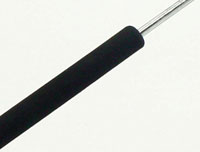 A foam is a substance that is formed by trapping many gaseous bubbles in a liquid or solid. A foam is a substance that is formed by trapping many gaseous bubbles in a liquid or solid.
A foam is normally an extremely complex system consisting of polydisperse gas bubbles separated by draining films.
The term foam may also refer to anything that is analogous to such a phenomenon, such as quantum foam, polyurethane foam (foam rubber), XPS foam, Polystyrene, phenolic, or many other manufactured foams. Fine foam can be considered a type of colloid.
Leather Cover
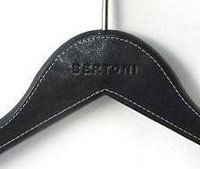 Leather is a durable and flexible material created via the tanning of putrescible animal rawhide and skin, primarily cattlehide. It can be produced through different manufacturing processes, ranging from cottage industry to heavy industry. Leather is a durable and flexible material created via the tanning of putrescible animal rawhide and skin, primarily cattlehide. It can be produced through different manufacturing processes, ranging from cottage industry to heavy industry.
The leather and the fur industries are differentiated by the manufacturing importance of the raw materials used to make the wares. In the leather industry, the skin and rawhide are by-products of the meat industry, because the meat has greater commercial value than the rawhide and skin. In the fur industry, the meat is a by-product, because the skins and hides have greater commercial value. Moreover, in taxidermy, the raw materials usually are only the animal’s head and back; hide and skin also are the raw materials for manufacturing animal glue and gelatin.
Rope Wrapping
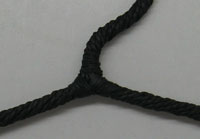 A rope is a length of fibres, twisted or braided together to improve strength for pulling and connecting. It has tensile strength but is too flexible to provide compressive strength (i.e. it can be used for pulling, but not pushing). Rope is thicker and stronger than similarly constructed cord, line, string, and twine. A rope is a length of fibres, twisted or braided together to improve strength for pulling and connecting. It has tensile strength but is too flexible to provide compressive strength (i.e. it can be used for pulling, but not pushing). Rope is thicker and stronger than similarly constructed cord, line, string, and twine.
Rubber Coating
 A rubber painting is a type of painting distinguished by the use of velvet (available in black rubber or difference colors) as the support, in place of canvas, paper, or similar materials. The rubber provides an especially dark background against which colors stand out brightly. A rubber painting is a type of painting distinguished by the use of velvet (available in black rubber or difference colors) as the support, in place of canvas, paper, or similar materials. The rubber provides an especially dark background against which colors stand out brightly.
Rubber painting is an ancient technique, and took on a new popularity in the United States in the late 20th Century.
SatinCover
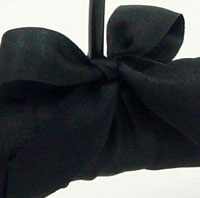 Satin is a weave that typically has a glossy surface and a dull back. It is a warp-dominated weaving technique that forms a minimum number of interlacings in a fabric. Some definitions insist that the fabric is made from silk.[1] If a fabric is formed with a satin weave using filament fibres such as silk, nylon, or polyester, the corresponding fabric is termed a satin. If the yarns used are short-staple yarns such as cotton, the fabric formed is considered a sateen. Satin is a weave that typically has a glossy surface and a dull back. It is a warp-dominated weaving technique that forms a minimum number of interlacings in a fabric. Some definitions insist that the fabric is made from silk.[1] If a fabric is formed with a satin weave using filament fibres such as silk, nylon, or polyester, the corresponding fabric is termed a satin. If the yarns used are short-staple yarns such as cotton, the fabric formed is considered a sateen.
Velvet Flocked Coating
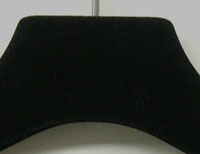 A velvet painting is a type of painting distinguished by the use of velvet (usually black velvet) as the support, in place of canvas, paper, or similar materials. The velvet provides an especially dark background against which colors stand out brightly. A velvet painting is a type of painting distinguished by the use of velvet (usually black velvet) as the support, in place of canvas, paper, or similar materials. The velvet provides an especially dark background against which colors stand out brightly.
Velvet painting is an ancient technique, and took on a new popularity in the United States in the late 20th Century. |
